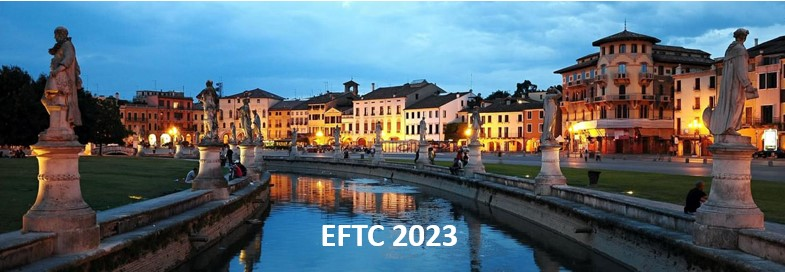Speaker
Description
This work deals with the relation/interaction between plasma flow and magnetic field during the process of reversed-field pinch (RFP) quasi-helical self-organization [1, 2], featuring improved confinement in the RFX-mod RFP [3].
Experimental [3] and modelling [4] evidence shows that helical self-organization is characterized by quasi-periodical relaxation-reconnection events: partial conversion of magnetic into kinetic energy, current sheet formation, steepening of plasma current profiles, ion heating, locking of the angular phases between different Fourier components of the magnetic field. The latter is recognized as the three-dimensional trigger of the reconnection events [5].
In this work, the focus is on the behaviour and role of the plasma velocity field during the process. In fact, plasma velocity can interact with the magnetic field and with resonant magnetic perturbations in a rich variety of manner, classified in [6, 7].
Numerical results are shown, obtained by solving a three-dimensional nonlinear visco-resistive magnetofluid model (magnetohydrodynamics, MHD) that describe the hot current-carrying plasma.
We will discuss the interaction of a velocity field with the magnetic field, showing that the plasma flow halts the growth of magnetic instabilities. Then we will look at the velocity shear field that, as expected, curbs the amplitude of MHD modes [8] and at plasma vorticity.
The final part of the work will present a preliminary investigation on the role of a spatially localized peak of the shear velocity field. Such an increased shear appears to forerun the locking of the magnetic field modes that, in turn, creates the conditions for the relaxation event
References:
[1] S. Cappello, D. Biskamp, Nuclear Fusion, 36, 571 (1996)
[2] S. Cappello, D.F. Escande, Physical Review Letters, 85, 3838 (2000)
[3] R. Lorenzini et al, Nature Physics, 5, 570 (2009)
[4] D. Bonfiglio, M. Veranda et al., Physical Review Letters, 111 085002 (2013)
[5] M. Veranda et al., Rendiconti Lincei. Scienze Fisiche e Naturali, 31, 963, (2020)
[6] R. Fitzpatrick, Physics of Plasmas 5 , 3325 (1998)
[7] M. Bécoulet, G. Huysmans, X. Garbet et al., Nuclear Fusion 49, 085001 (2009)
[8] H. Biglari, P. H. Diamond, P. W. Terry, Physics of Fluids B 2 1 (1990)

